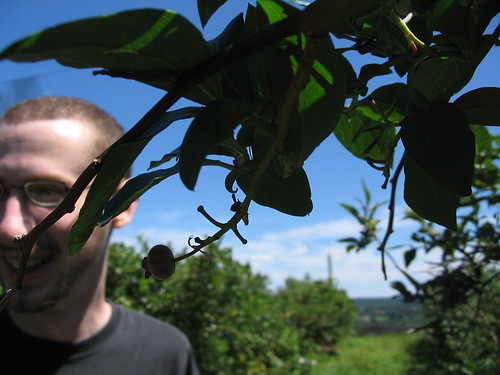I wanted to start my first day by trying to make sound with a sand dollar. I started by running my fingers and fingernails over the sand dollar, tapping it, trying things like that. The sound was very quiet and mostly homogenous. By holding the sand dollar near my ear, I could hear it better, it was a pretty sound, but I also suspect that much of the sound was actually my fingernail being vibrated by the bumps on the sand dollar's surface. The perimeter of the sand dollar did sound higher than the center.
To try to take my fingernail out of the sound, I tried running the sand dollar along the stones I collected from Parsons Cove in Kennebunkport, Maine. There were more possibilities for heterogeneity here. I tried rubbing the stones with the front and back sides of the sand dollar, running the sand dollar over the surface of the stone, turning the sand dollar on its side and wheeling it across the stones (and from stone to stone), lightly tapping the sand dollar on the stones, and letting go of the sand dollar while it lay on one of the stones so that it would rattle for a second. All of these activities produced different sounds. Everything was still pretty quiet, and wheeling, tapping, and letting go of the sand dollar were barely audible. Playing with different stones produced different sounds. I tried tapping the stones, and found that each stone had a different pitch, which explained the different sounds. In general, it seems like the sand dollar produces more sound by resonating other obejcts than by resonating itself.
I tried briefly running the sand dollar over glass surfaces (the glass in front of the framed page from LN's thesis that I have, and the glass jars containing many of my other sand dollars), but wasn't interested in the barely audible sound this produced.
I moved to my dressing room and closed the door. The dressing room doesn't have anything electronic or mechanical in it that produces noise. I tried playing the sand dollar with my fingers again, and then pressed the sand dollar against the plaster wall of the dressing room and tried running it along the surface of the wall. This produced a louder sound than anything yet and provided me with a variety of possibilites. I tried slowing moving the sand dollar slower and slower, seeing how slow I could move it without it stopping or jerking. I tried coordinating my movement with indents and scratches on the wall. I tried moving the sand dollar as far as I could along the wall without standing up, as far as I could reach with my arms. I experimented making patterns on the wall, moving the sand dollar faster and slower, using both sides of the sand dollar (the flat side was much easier), and pressing harder or softer against the wall. There were enough things to think about that I decided this could be the source of the piece I bring to TH on Wednesday. I could create a piece about:
- tracing all the dents, indentations, and scratches in the wall within one's reach without moving one's feet
- running the sand dollar across the wall faster, and then slower, harder, and then softer, for time intervals, or in concert with breathing, or
- I could compose a duet asking each performer to gradually slow the speed of their sand dollar until it stopped, and then wait for the other performer.
We'll see, there must be better ideas for a duet, but I'll think about it if this still seems like the best idea in a few days.
Playing with the sand dollar and stones from Parsons Cove made me think about how doing the same thing might sound if the stones were amplified. I can't do "Listening to the Ocean through Five Stone Portals" until next summer, most likely, but I might be able to do some interesting tests between now and then, and perhaps use performance series, such as the Tuesday series on 4th Street, as opportunities to try things out. I can't make contact microphones this weekend, but I might try to do that next weekend (or more likely the weekend after that, because next weekend is the New England Sacred Harp Convention in Newbury, VT) for TH.
While I was playing, I felt like I wasn't getting anything out of the exercise, but I do feel a little better after writing about it, and I'm sure as I continue to focus on making sound every day, the cumulative effect will be more palpable.

